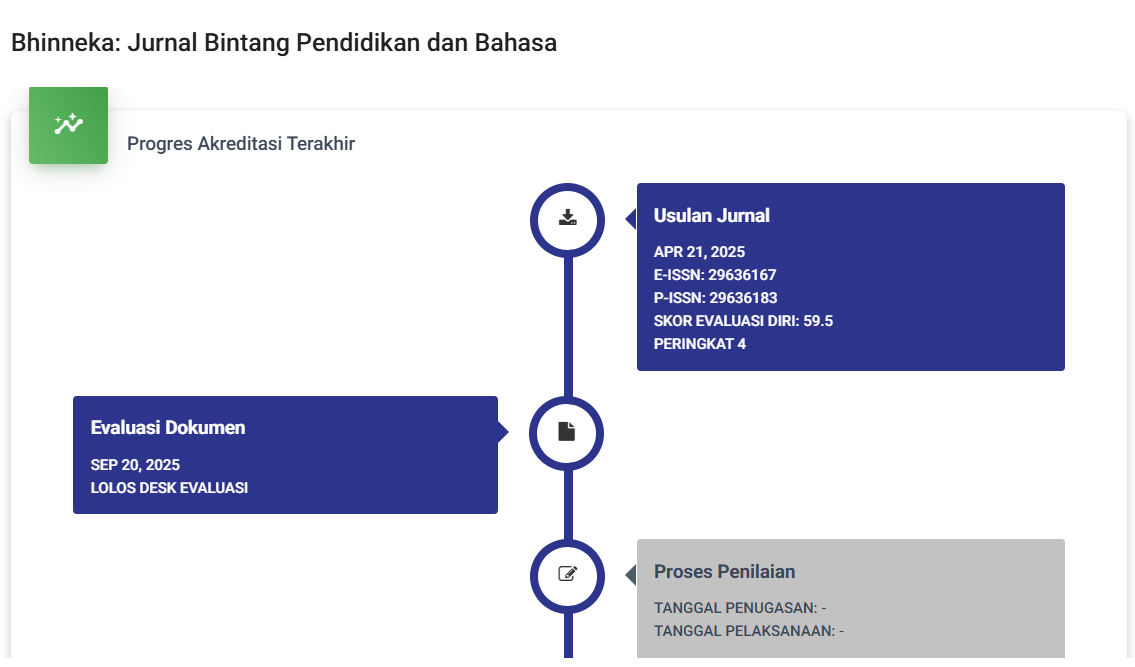Morphosemantic Study Of Compound Words In The New York Times Articles
DOI:
https://doi.org/10.59024/bhinneka.v1i2.193Keywords:
compound word, morphosemantic, New York TimesAbstract
The New York Times is USA’s most popular digital news platform which can be accessed easier by people around the world. Due to many new words that can be combined to become compound words, it is interesting to see the compound words that are applied on the New York Times website. This study looked at the different the types and meanings of compound words used in the New York Times articles. The study describes the types of compound words with the theory proposed by Katamba (1993). Then, to analyze the meanings of compound words, the theory by Palmer (1991) was used. To achieve the objectives, descriptive qualitative methods were used in the study. The data were taken from the New York Times website. In collecting data, the documentation method with note-taking techniques was applied. From 58 data collected, the results showed that compound nouns become the most common types of compound words used in the articles with 33 compound words, followed by compound verbs with 13 compound words, and compound adjectives with 12 compound words. Referring to the meaning of compound words, there are 34 compound words with opaque meanings and 24 compound words with transparent meanings.
References
Barkah, A. (2021). A Morphological Analysis of Compound Words in The Selected Speech of Susilo Bambang Yudhoyono. Undergraduate Thesis. UIN Sunan Gunung Djati, Bandung. Retrieved from http://digilib.uinsgd.ac.id/40958/
Cahyanti, R.D. (2016). Compound words used in Stephenie Meyer’s Twilight. JEFL 6, 59. https://doi.org/10.23971/jefl.v6i1.429
Carstairs-McCarthy, A. (2002). An introduction to English morphology: words and their structure. Edinburgh: Edinburgh University Press.
Christianto, D. (2020). COMPOUND WORDS IN ENGLISH. LLT Journal: A Journal on Language and Language Teaching, 23 (1), 27–36. https://doi.org/10.24071/llt.v23i1.2030
Damayanti, L. & Malini, N.L.N.S. (2020). Compound Words Found in Seventy-Seven Thousand Service-Trees (Sri Chinmoy). e-Journal of Linguistics, 14(2), 268–275. https://doi.org/10.24843/e-jl.2020.v14.i02.p10
Kanti, T.R. (2019). A DESCRIPTIVE ANALYSIS OF USED COMPOUND WORDS IN HEADLINE COLUMN OF THE JAKARTA POST (other). Undergraduate Thesis. IAIN Salatiga, Salatiga. http://e-repository.perpus.iainsalatiga.ac.id/5657/
Katamba, F. (1993). Morphology. University of Virginia: Macmillan.
Katamba, F. (1994). English Words. Routledge.
Kreidler, C.W. (1998). Introducing English Semantics. Routledge.
Maharani, S.D. & Refnaldi, R. (2022). Morphological Analysis of Compound Words Used in Colleen Hoover’s It Ends with Us and Delia Owens’ Where the Crawdads Sing Novels. English Language and Literature, 11, 457–467.
Manokaran, K., Nian, O.S., & Shuoh, G.W. (2021). A STUDY ON SYNTACTIC AND SEMANTICS OF COMPOUND WORDS IN THE RECIPE BOOKS. Jurnal Kata : Penelitian tentang Ilmu Bahasa dan Sastra, 5, 108–121. https://doi.org/10.22216/kata.v5i1.69
Mita Yanti, N.K., Qomariana, Y., & Aryawibawa, I.N. (2018). Types and Meanings of Compound Words Found in Medical Textbook Entitled Gray’s Basic Anatomy. Humanis, 22, 1099. https://doi.org/10.24843/JH.2018.v22.i04.p36
Nida, E. (1952). Morphology: The Descriptive Analysis of Words, 2nd Ed. Ann Arbor: University of Michigan Press.
Ocavianti, E. (2021). Compound Words Found in Articles of The Jakarta Post Website. Undergraduate Thesis. Udayana University, Denpasar.
Oktafiani, D. & Sari, R.P. (2019). COMPOUND WORDS IN CHILDREN BOOKS TITLE AS A MEAN TO ACCELERATE CHILDREN VOCABULARY ACQUISITION. Jurnal Akrab Juara, 4(3), 152–165.
Palmer, F.R. (1981). Semantics. Cambridge University Press.
Quirk et al. (1985). A Comprehensive Grammar of the English Language. London: Longman.
Rachman, N. & Simatupang, E.C. (2022). Compound Words in Evermore Album by Taylor Swift: A Morphology Study. Ethical Lingua: Journal of Language Teaching and Literature, 9, 619–627. https://doi.org/10.30605/25409190.474
Sari, N.L.R.T.A. (2018). English Compound Adjective with Special Reference to Tourism Website. Humanis, 22(2), 374–381. https://doi.org/10.24843/JH.2018.v22.i02.p14
Simatupang, E.C. & Supri, I.Z. (2020). COMPOUND WORDS THAT OCCUR DURING THE GLOBAL PANDEMIC COVID-19: A MORPHOSEMANTIC STUDY. English Review: Journal of English Education, 8 (2), 291–298. https://doi.org/10.25134/erjee.v8i2.2824
Turangan, K.A. (2017). Compound Words in BBC News Website. Undergraduate Thesis. Udayana University, Denpasar.
Vinney, MC. (2017). English Closed Compound Words in Articles Related to Kartini Day Found in The Jakarta Post April 2016 and 2017. Undergraduate Thesis. Sanata Dharma University, Yogyakarta.
Wikipedia. (n.d). The New York Times. Wikipedia. Available at: https://en.wikipedia.org/wiki/The_New_York_Times, diakses tanggal 1 Mei 2023.
Yule, G. (2006). The Study of Language, 3rd ed. New York: Cambridge University Press.








